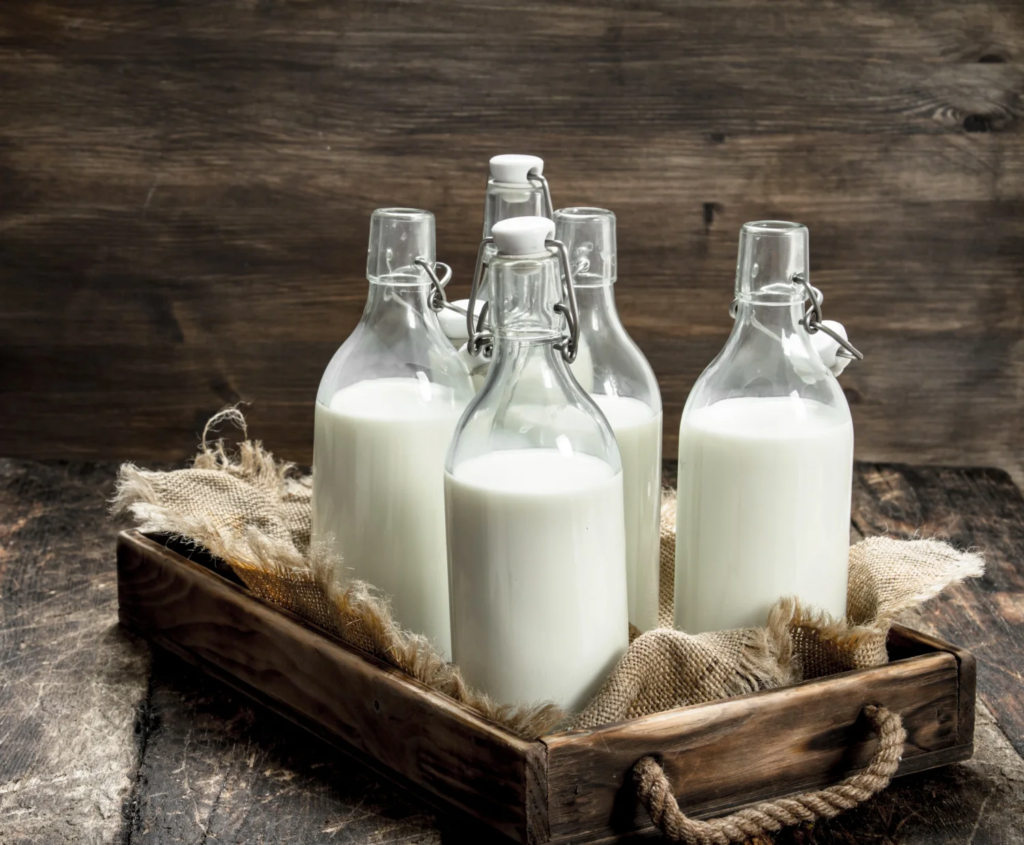
Why Do People Drink Raw Milk?
If you’ve ever wondered why more people are drinking raw milk, you’re not alone. In an age of ultra-pasteurization, shelf-stable milk, and fortified formulas, choosing fresh, unprocessed raw milk might seem old-fashioned — or even risky to some. But to many families, health-seekers, and those with sensitive bodies, it’s a powerful return to real food.
So why do people drink raw milk?
The short answer: because they feel better when they do.
Whether they’re choosing it for babies with colic, children with eczema, or adults looking to support digestion and energy, many people find that raw milk offers a noticeable difference. It’s not a miracle cure, but it is a deeply nourishing, whole food — and for many, it’s been a missing piece of the puzzle.
Let’s explore the most common reasons people choose raw milk, the benefits they experience, and what makes it different from the processed milk most of us grew up on.
1. Raw Milk Is a Complete, Living Food
Raw milk is milk in its original state — unpasteurized, unhomogenized, and full of natural enzymes, healthy fats, vitamins, and beneficial bacteria. Nothing is removed, nothing is added.
It contains:
Natural digestive enzymes, including lactase, lipase, and phosphatase
Probiotics, which support a healthy microbiome
Fat-soluble vitamins like A, D, and K
Essential minerals including calcium, magnesium, and selenium
Healthy fats and proteins that the body can easily absorb
Pasteurization — the process of heating milk to kill bacteria — may make milk more shelf-stable, but it also destroys many of these naturally occurring nutrients. Homogenization, which breaks down fat molecules to prevent cream from separating, changes the structure of the milk in ways that can make it harder to digest.
Raw milk, when produced safely and cleanly, is a nutrient-dense, easily absorbed food — and for those with digestive or inflammatory issues, that can make a world of difference.
2. It’s Easier to Digest — Especially Goat Milk
Many people who struggle with dairy digestion find that raw goat milk, in particular, is much gentler on the body. Why?
Smaller fat globules make goat milk naturally homogenized — easier to digest without mechanical processing
A2 casein proteins, found in most goats, are gentler than the A1 proteins in most cow’s milk, which can trigger inflammation in sensitive people
Lower lactose content, plus the presence of natural lactase, means people with lactose intolerance often tolerate raw goat milk well
This makes raw goat milk a favorite among parents of infants, children with food sensitivities, and adults with autoimmune conditions, IBS, or skin issues like eczema.
Real Stories from the Farm:
Listen to what one set of parents shared with us:
“We tried everything the doctors told us — every kind of formula and supplemental nutrition — and nothing worked. Our 9-month-old daughter still had failure to thrive and was still in and out of the PICU. But when we started raw goat milk through you, our baby was finally happy and gaining weight. For the first time in her life, she was gaining on the growth charts!”
It’s not magic. It’s just nature, working the way it was designed to.
3. Raw Milk Supports Gut Health
You’ve probably heard a lot about gut health lately — and for good reason. Research shows that the gut microbiome influences digestion, immunity, brain function, and even mood.
Raw milk plays a powerful role in this area. Because it’s unprocessed, it contains:
Live probiotics that feed good gut bacteria
Prebiotics that help beneficial microbes thrive
Digestive enzymes that aid in nutrient absorption
The Raw Milk Institute highlights the critical role raw milk plays in gut development, especially for children. Their research and field data show that high-quality raw milk can help balance the gut microbiome, regulate inflammation, and support overall immunity.
4. Raw Milk Strengthens the Immune System
Raw milk isn’t just food — it’s functional nourishment. It contains compounds that support immune health in a natural way:
Lactoferrin, which binds iron and has antimicrobial effects
Immunoglobulins, which help the body recognize and respond to pathogens
Beneficial bacteria, which train and balance the immune system
These compounds are heat-sensitive and are destroyed by pasteurization. That’s why many people with autoimmune issues, chronic inflammation, or recurrent illness report fewer flare-ups and stronger immune resilience after switching to raw milk.
5. It May Reduce Allergies and Asthma in Children
One of the most exciting areas of research around raw milk is its potential to reduce childhood allergies and asthma.
The PASTURE Study, published in The Journal of Allergy and Clinical Immunology, showed that children who drank raw milk early in life had significantly lower rates of asthma, eczema, and seasonal allergies.
The researchers suggested that raw milk’s natural immune-regulating compounds help prevent the overactive immune responses that lead to allergic disease.
For parents looking to give their children a healthier start — especially if they have a family history of allergies — this research is a game-changer.
6. Raw Milk Comes from Local Farms You Can Trust
More than ever, people want to know where their food comes from. Raw milk offers a level of transparency and connection that industrial food can’t match.
When you buy raw milk directly from us:
You nourish your body
You and your family thrive
You know how the goats are treated
You can often visit the farm and ask questions
You know your raw milk is quality tested
You support sustainable, humane, and regenerative agriculture
You trust the hands that produce your food
At our farm, we welcome questions and visits. We believe you deserve to know how your milk is made — and that trust is earned, not assumed.
7. It Tastes Better
Let’s not forget this simple truth: raw goat milk tastes amazing.
Fresh raw goat milk has a smooth, creamy texture and a slightly sweet flavor. It lacks the “goaty” taste many people fear — which usually comes from poor handling or diet, not the milk itself.
Because the cream hasn’t been homogenized, and the natural enzymes are intact, raw milk often feels more satisfying and “complete” than the milk most people are used to.
8. It’s Rooted in Tradition — and Backed by Research
Raw milk isn’t new. It’s a traditional food that’s nourished families around the world for thousands of years.
Organizations like the Weston A. Price Foundation promote raw milk as a cornerstone of ancestral diets, supporting strong bones, vibrant immunity, and resilient children.
At the same time, modern research from institutions like RAWMI shows that raw milk — when produced safely — can meet or exceed safety standards and provide measurable health benefits.
It’s not about looking backward. It’s about recognizing that some foods, in their most natural form, offer something that science is only beginning to understand.
In Closing: Is Raw Milk Right for You?
Every person is different, and every body responds uniquely. Raw milk isn’t for everyone — but for those who benefit, it can be life-changing.
If you’re curious:
Visit a local farm (we’d love to answer your questions!)
Ask about their safety standards and milking practices
Try a small amount and listen to your body
Connect with others who’ve made the switch
Whether you’re a first-time mom looking for a better formula alternative, someone managing an autoimmune condition, or simply a person who wants to feel well again — raw milk might be the missing piece.
At Grace Heritage Farms, we’re here to support your journey with clean, safe, and compassionate raw goat milk — from our family to yours.
Ready to try it? Check out our current product availability!
Resources
Raw Milk Institute – Research, safety standards, and advocacy
Weston A. Price Foundation – Education on traditional diets, including raw milk
PASTURE Study Summary – Research on raw milk and allergy prevention


